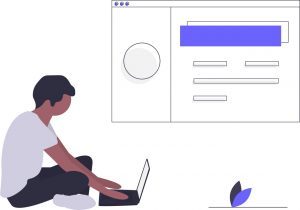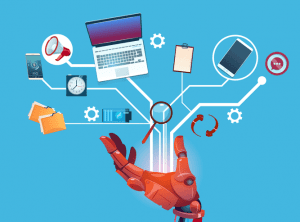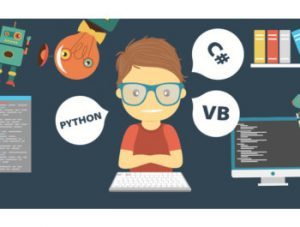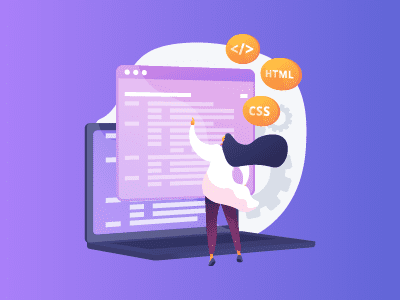How to Become a Student Developer
 Last Moment Tuitions
Last Moment Tuitions
Blog: A blog about what it takes to succeed in software development and how to plan for the future.
How to Become a Student Developer

Computer science is one of the most popular and in-demand professions in the digital age. Learning the complexities of computers and the developing technologies with which they may be combined has grown more essential as computers have permeated virtually every area of our lives and the whole economy. This is an excellent subject to study for those who are interested in computers and digital devices. Programming, software design and development, web design, computer engineering, and other related fields are only a few examples of what “computer science” entails.
You have a lot of time as a student, and if you utilise it wisely, you may obtain a high-paying programming job based on your skillset and interests.
Before we get started on how to become a programmer, I want to make sure you understand exactly what a computer programmer does. A programmer is a person who develops code that instructs a computer or other device.
A software developer takes an idea or design and creates the code that informs the computer how to put it into action. A web developer, for example, takes a proposed website design and builds it by creating the appropriate code.
In most cases, a computer programmer is developing or producing something based on the design specifications of someone else. However, some programmers create their own applications, so if you’re an entrepreneur, this is always a possibility!
Let’s move on to how to study programming and become a skilled programmer now that we’ve addressed the question “What does a computer programmer do?”
Step 1) Understand Why You Want To Start Programming
 If you want to be a programmer, you must first figure out why you are interested in the field. The first step is to figure out why you want to begin, and knowing the language you want to learn can help you select which path to pursue. You should consider whether or not you want to pursue it as a profession. Do you have a personal project or idea that you’d want to develop? Or do you merely want to study something because it’s ‘popular’ right now? If you don’t want to be a programmer, you might want to consider being an engineer.
If you want to be a programmer, you must first figure out why you are interested in the field. The first step is to figure out why you want to begin, and knowing the language you want to learn can help you select which path to pursue. You should consider whether or not you want to pursue it as a profession. Do you have a personal project or idea that you’d want to develop? Or do you merely want to study something because it’s ‘popular’ right now? If you don’t want to be a programmer, you might want to consider being an engineer.
Step 2) What kind of programming are you interested in?
You should carefully consider the type of programming you want to perform and the field you want to enter. Do you wish to work as a web developer on the back end? Do you want to be a software engineer? Or do you wish to work on new technology like artificial intelligence (AI) or another? Be honest with yourself when answering this question since the answer will help define your learning path.
Step 3) Make a decision on the field you want to pursue.
Programming comes in a number of shapes and sizes. When you’re trying to figure out how to learn to program, you need to consider carefully what field you want to work in. The following are some of the most common categories of programmers:
- IT Specialist

- Computer Programmer
- System Designer
- Data Scientist
- Web Developer
- Software Developer
- Software Test
- E-commerce Specialist
- System Engineer
- Database Administrator
- Programmer
Step 4) Pick a programming language to learn (or Three)
Once you’ve decided on a programming career path, you’ll need to study the languages used in that industry. For example, if you want to work as a database administrator, you’ll need SQL, CSS, and JavaScript, and if you want to work as a front-end web developer, you’ll need Java or Swift.
Python, Java, C, C++, Ruby, Solidity, CSS/HTML, and others are popular.
Step 5) Rehearse, rehearse, and rehearse some more
 So you want to learn how to program, don’t you? So, here’s a little something for you:
So you want to learn how to program, don’t you? So, here’s a little something for you:
It is necessary for you to practise. You must put in a lot of practice time!
That’s true (surprise, surprise), practise is the key to becoming a competent coder! From the minute you begin learning, begin writing code. Create your own applications using a code editor in your browser.
Share them and invite others to review your code. Every day, try to learn something new and practise until you are fluent in all elements of your chosen language.
Step 6) Begin compiling a portfolio of your work.
While you’re practising, you should start putting together a portfolio. One of the basics is to have a good portfolio that you can present to potential companies.
When applying for a job as an entry-level programmer, keep in mind that there are likely to be a few other people applying for the same position. You need to do something that sets you apart from the rest of the pack. A portfolio is an excellent method to do this.
Save all of the small pieces of code you produce while learning how to become a programmer. Keep them somewhere safe – a website is a good option because you can edit or even construct it using your technical skills – and make them available to potential employers when you’re job/internships hunting.
Step 7) Practical Work!
You’re well on your way to becoming a skilled coder at this point.
You’ve decided on a programming career path, started learning the skills and programming languages you’ll need, and begun practising writing code. You’ve put together a portfolio of your work and (hopefully) rewritten your CV.
It’s time to start looking for work, as you may have already guessed! Look for entry-level programming employment relating to the languages you’ve studied and the sort of programming you’d like to undertake.
Since you’re a student, look for internships, courses, and freelancing.
Seek out a mentor who can assist you through the entire process based on their own experiences.
Join your college committees if you can so that you may collaborate with them.
Develop soft skills such as leadership, teamwork, and communication, as well as extracurricular activities!
Step 8) Continue to learn!
Programming is, as you might expect, a fast-evolving field. Learning how to programme now may not provide you with the abilities you’ll need to stay a competent programmer over the next several decades. You must continue to acquire new skills and languages.
It’s a good habit of mine to attempt to learn something new every day. This might be a new syntax, a new tool for your favourite language, or a new approach to developing a program. It makes no difference as long as you keep learning!
 Begin right now!
Begin right now!
After university/college, the sooner you begin working, the more likely you are to find jobs.
Programming is a broad discipline that caters to a wide range of interests. It doesn’t matter if you’re an 18-year-old high school dropout or a 40-year-old craftsman; you can learn to programme if you put your mind to it.
This step-by-step tutorial should provide you with all of the essential knowledge you’ll need to get started as a programmer. It covers a variety of programming professions, as well as some of the most popular languages for beginners to learn and a variety of other topics that will be beneficial as you begin to code.
It’s important to remember that everyone can learn to code. The most difficult aspect is getting started, so pick an online course and start now.







